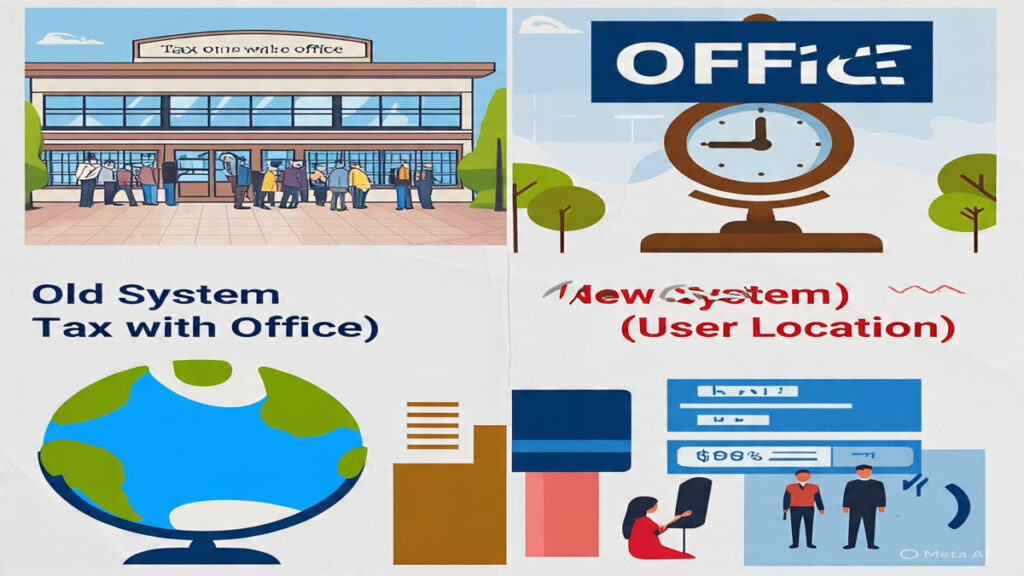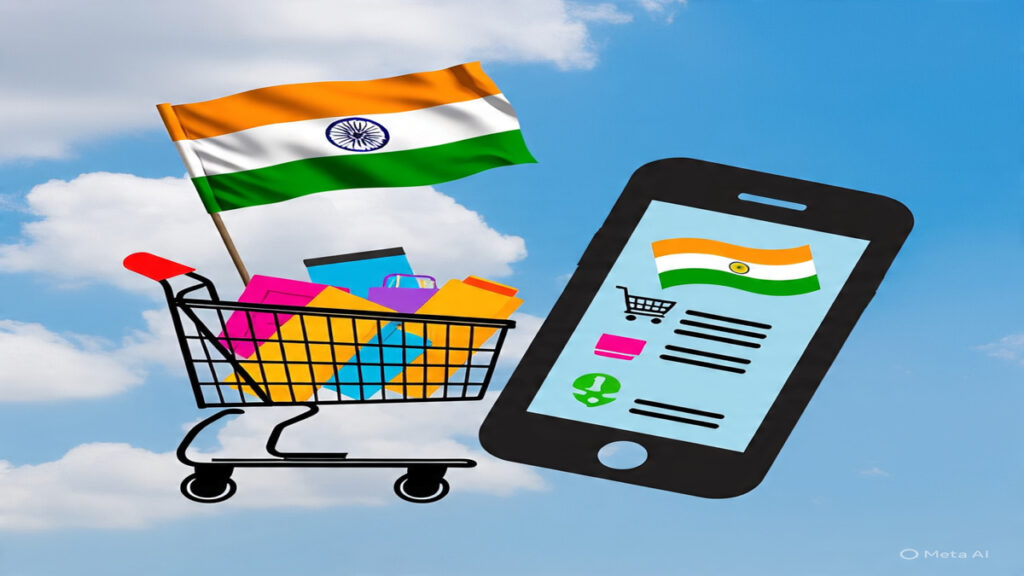📘 Introduction: Why Digital Companies Pay Special Tax
Imagine you’re using Google, Amazon, Netflix, or Facebook daily. These companies earn money from you — even if they don’t have an office in your country!
But how will your government collect tax from them?
That’s where Digital Services Tax (DST) comes in.
Let’s understand this important concept in a very simple way, made especially for students of B.Com, M.Com, BBM, BBA, NET/SET, MBA & PGD.

Alt Text: “Tech companies earning revenue globally”
Caption: Big digital companies earn revenue in many countries without a local office.
📌 What is DST?
Digital Services Tax (DST) is a tax charged on the online revenues earned by big digital companies from users in a country, even if the company doesn’t have a physical office there.
👉 It applies to:
- Online ads (e.g., Google Ads)
- E-commerce (e.g., Amazon, AliExpress)
- Streaming (e.g., Netflix, Spotify)
- Selling user data (e.g., Meta)
Note: DST is not income tax. It is charged on the total revenue from digital services.
📍 Why Was DST Introduced?
Before DST, companies were taxed only where they had offices. But now, companies can make money from users in any country — without opening an office.
So, governments said:
“If you earn from our people, you must pay us tax.”
DST helps:
- Countries earn tax from digital activities
- Promote fair competition with local companies
- Avoid tax evasion by foreign giants

Alt Text: “Comparison of traditional and DST taxation models”
Caption: DST is based on where the users are — not where the company office is.
🇮🇳 DST in India – Equalisation Levy
India introduced DST under the name Equalisation Levy, in two steps:
📌 Step 1 – 2016:
- 6% tax on online ads paid to foreign companies (like Google)
📌 Step 2 – 2020:
- 2% tax on e-commerce sales by foreign companies (like Amazon, Alibaba)
✅ Example:
If an Indian user shops from a foreign website that doesn’t have an office in India, the 2% DST applies on that sale.

⚖️ Challenges of DST – Globally
DST sounds fair, but it’s also controversial.
🌐 Problems:
- USA opposes it (their companies are most affected)
- Double taxation risk (company pays tax in two countries)
- Hard to decide how much value is created in each country
- Every country has different DST rules
That’s why the OECD and G20 are trying to make a global tax rule.

🎓 Why Should You Learn DST?
DST is a hot topic in taxation and very useful for:
✅ UGC NET / SET Commerce
✅ MBA / PGD / M.Com students
✅ B.Com / BBA final year exams
✅ Case studies and current affairs questions in exams
Learning DST helps you understand how taxation is changing in the digital economy.
📚 Key Terms You Should Know
| Term | Meaning |
| DST | Tax on digital revenue from users in a country |
| Equalisation Levy | India’s version of DST |
| Revenue-based tax | Tax charged on total income, not profit |
| OECD | Group working to create fair global tax rules |
✅ Conclusion
Digital Services Tax (DST) is a modern tax for a modern world. As digital companies grow, governments are finding new ways to ensure they pay their fair share.
As a commerce student, knowing DST gives you:
- ✍️ An edge in exams
- 💼 Real-world knowledge for careers in finance, tax, or law
- 🌍 Awareness of global economic changes
